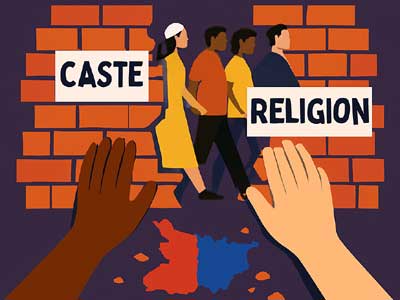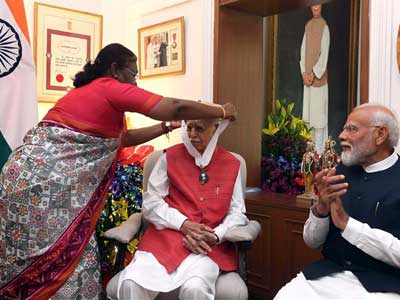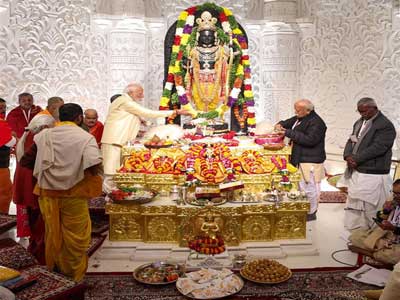The entire nation watches eagerly as November 14 approaches. Will Lalu Yadav’s infamous Jungle Raj return to Bihar, or will Nitish Kumar’s dynamic and transformative leadership continue to hold sway? The outcome of the Bihar Assembly elections is poised to reshape the country’s political landscape.
Currently, Tejashwi Yadav leads the MahaGathBandhan, which promised ambitious dreams and offered enticing political incentives. Nitish Kumar highlighted his track record of achievements during the campaign. Political strategist Prashant Kishor saw himself as the kingmaker, while Rahul Gandhi hoped to see the alliance in power as a junior partner.
Read in Hindi: बिहार में इस बार ढह जाएंगी जाति और धर्म की दीवारें...!
While Bihar’s development under Nitish Kumar has not matched the pace of neighbouring Uttar Pradesh, industrial growth remains limited; a closer examination of data reveals a steady and satisfactory progress pathway. The period when Lalu Yadav, Rabri Devi, and Tejashwi Yadav ruled for 18 years was marked by family-centric politics and frequent charges of corruption.
Two decades ago, Bihar was synonymous with Jungle Raj, a state plagued by crime, corruption, and economic stagnation that trapped its people in despair. But now, on the eve of the 2025 Assembly elections’ results, Bihar stands at a crossroads, ready to rewrite its narrative.
In 2005, Bihar’s Gross State Domestic Product was ₹75,608 crore, with over half the population living below the poverty line. Basic infrastructure like roads, electricity, and education was scarce. Per capita income was roughly a third of the national average, and literacy rates were especially low amongst women.
Under Nitish Kumar’s leadership, however, Bihar has undergone a remarkable transformation. The state’s GSDP is projected to reach nearly ₹11 lakh crore, per capita income has surged, and poverty rates have dropped dramatically. Literacy stands at 74.3 per cent, with female literacy having more than doubled. Improvements in infrastructure, rural connectivity, electrification, and quality of life are visible across the state.
This change was not spontaneous. From 2005 onwards, Nitish Kumar prioritised law and order, ending the Jungle Raj era characterised by rampant crime under Lalu and Rabri Devi. Kidnappings and violent offences declined sharply, encouraging investments and fostering development. The government invested heavily in girls’ education and rural road networks. Post-pandemic migrant labour returns and manufacturing incentives have further accelerated economic growth.
Yet, Bihar faces ongoing social and economic hurdles. Low income, unemployment, and entrenched caste-religion dynamics continue to hamper sustainable progress. The 2025 elections will be decisive; whether Bihar continues its development journey or falls back into old traps remains to be seen.
Nitish Kumar and the NDA pointed to a record of sustained growth, while opposition parties like the RJD campaigned on social justice, though the memories of the Jungle Raj era still influence public opinion. New political forces, particularly Prashant Kishor’s Jan Suraaj Party, introduced fresh options, adding complexity to the electoral landscape.
Unlike Uttar Pradesh, Bihar’s polarisation lines remain less stark. Nitish’s party continues to receive substantial Muslim votes, while the BJP focuses on development, setting aside religious rhetoric. The ruling JD(U) identifies as a secular party.
Initially, Prashant Kishor was seen as a catalyst for political upheaval in Bihar, bringing innovative voter strategies and youth engagement. However, his influence appears limited as old political equations resurface.
The average Bihar voter now believes that effective leadership and good governance can translate despair into development. This election offered a clear choice: will voters sustain the path of progress or revert to past mistakes? Every vote will play a crucial role in determining Bihar’s future.
Early indications suggest limited appetite for fringe parties, as most voters seem to align themselves with the national mainstream. Remember, Bihari migrants will make a big difference as they have become the chief opinion catalysts and opinion mobilisers.

















Related Items
How political parties became corporates…!
Bihar: In whose favour the political wind blowing…?
New Indian Romance that breaks caste barriers…